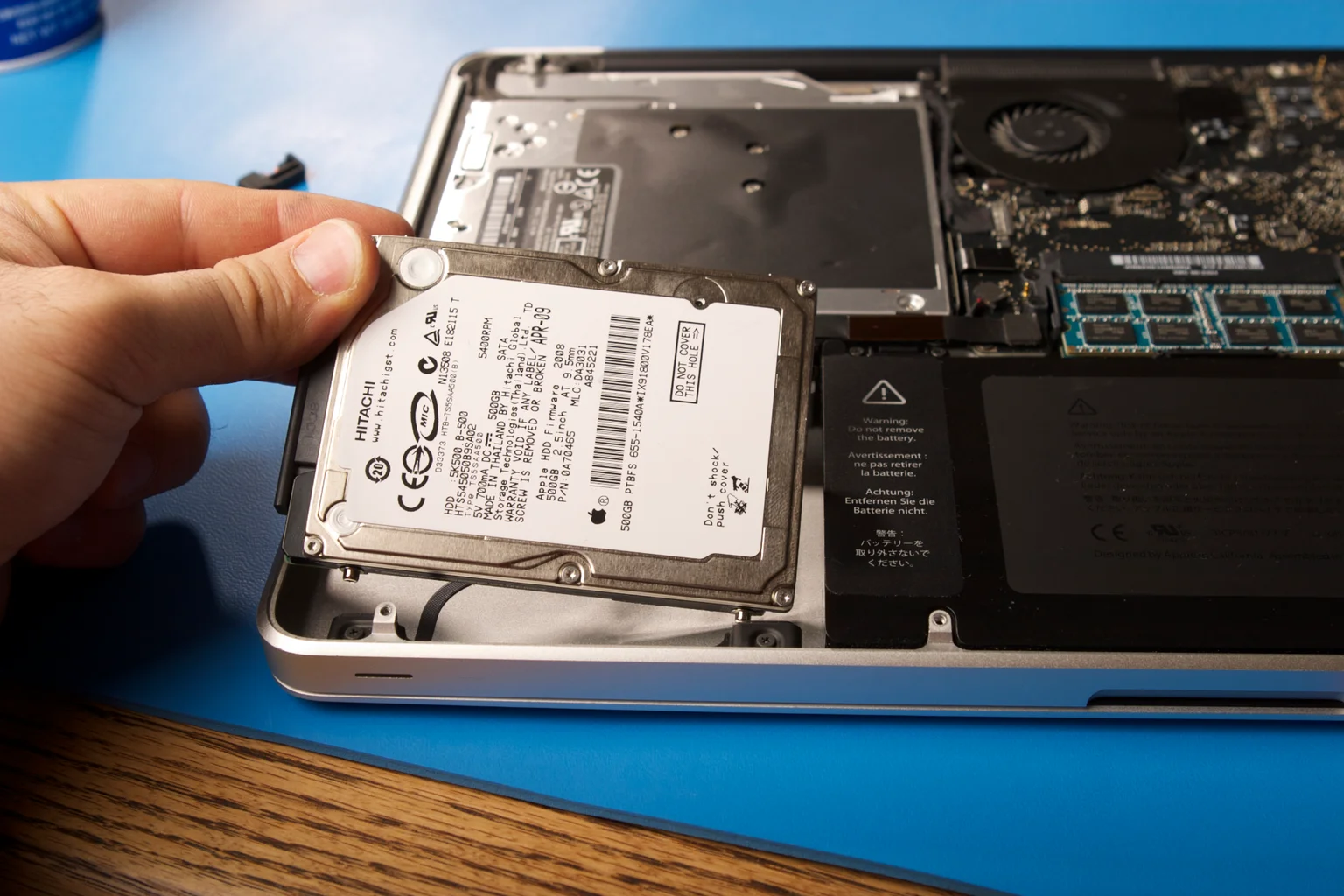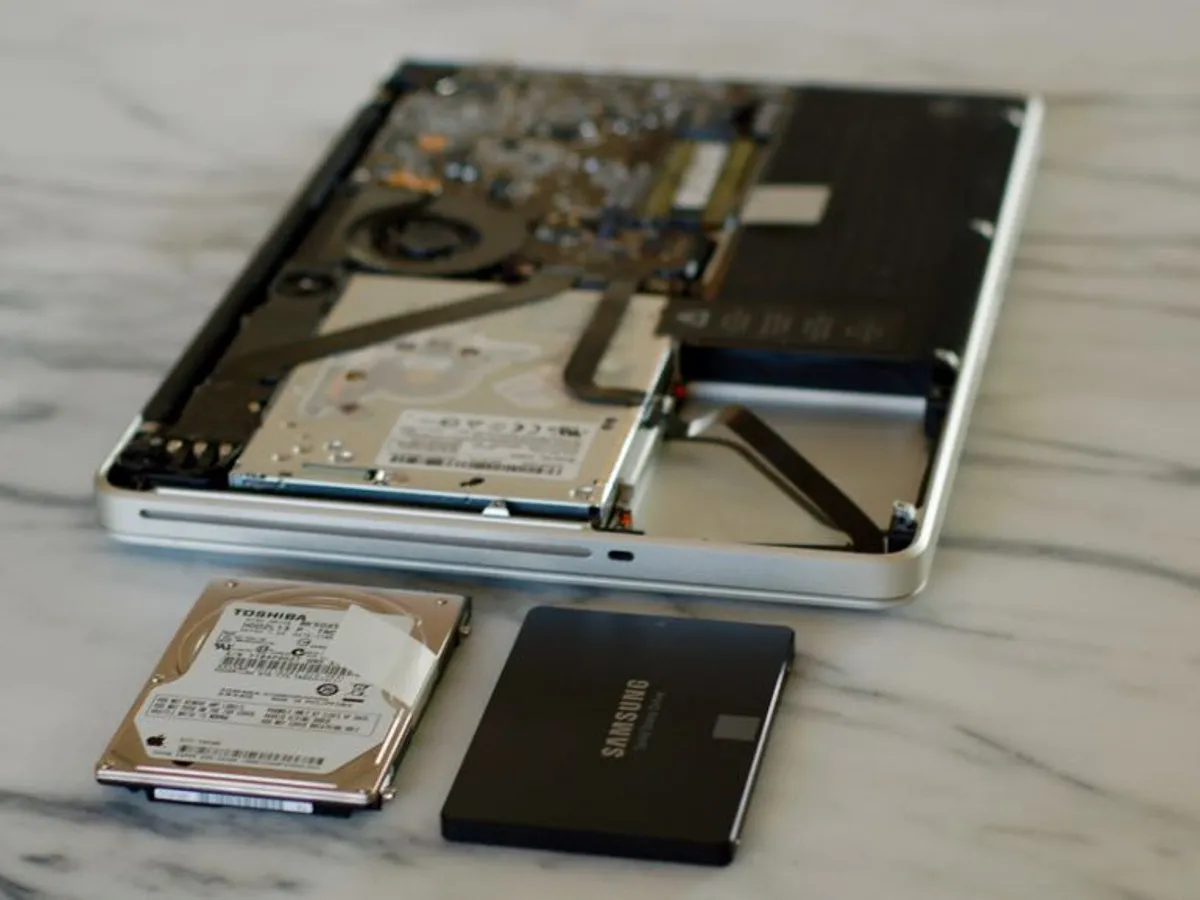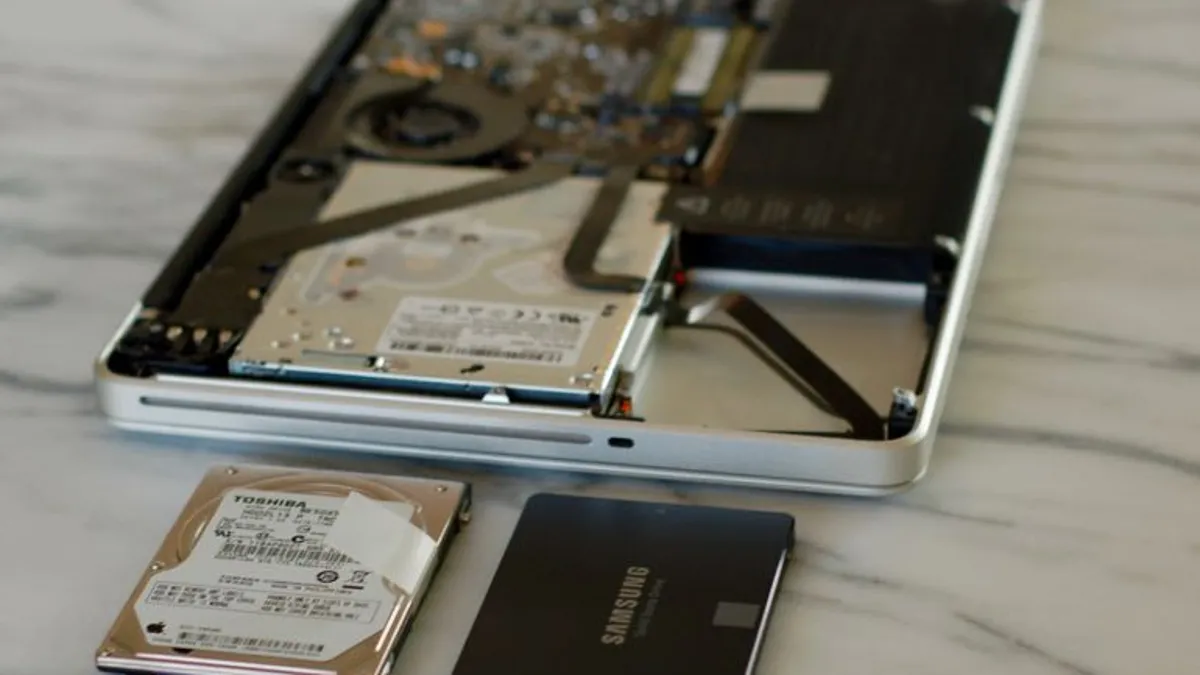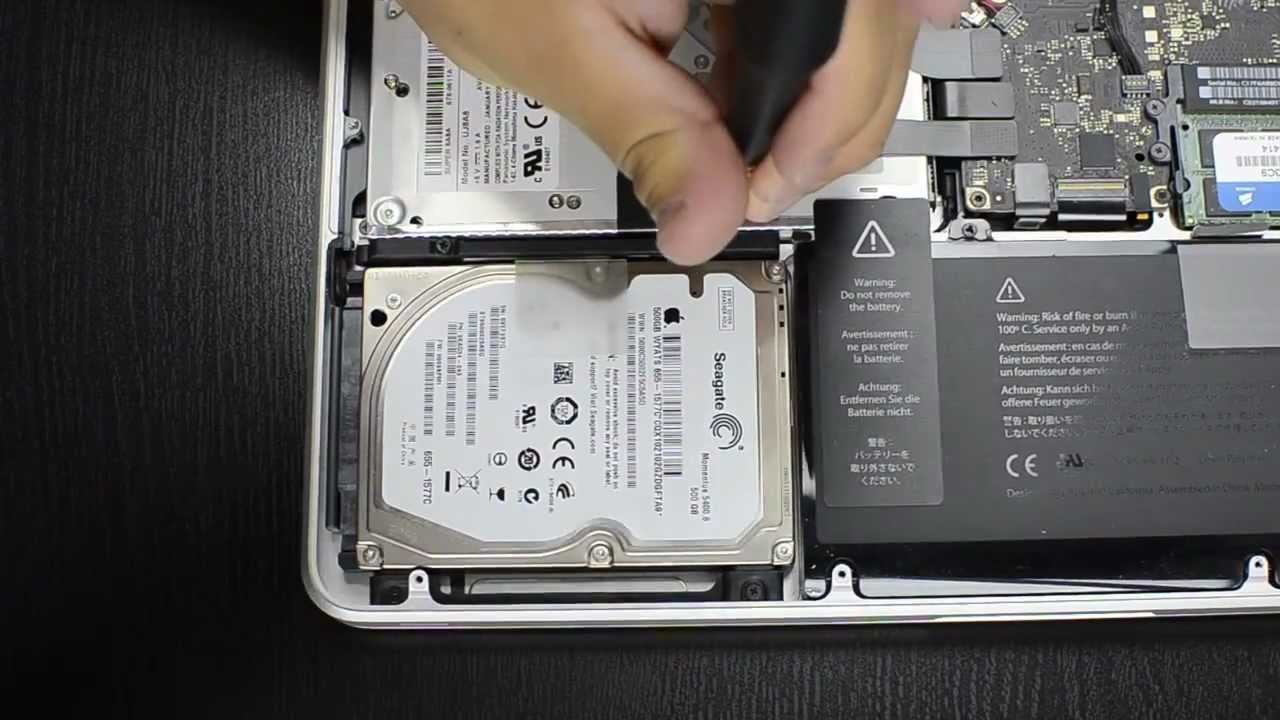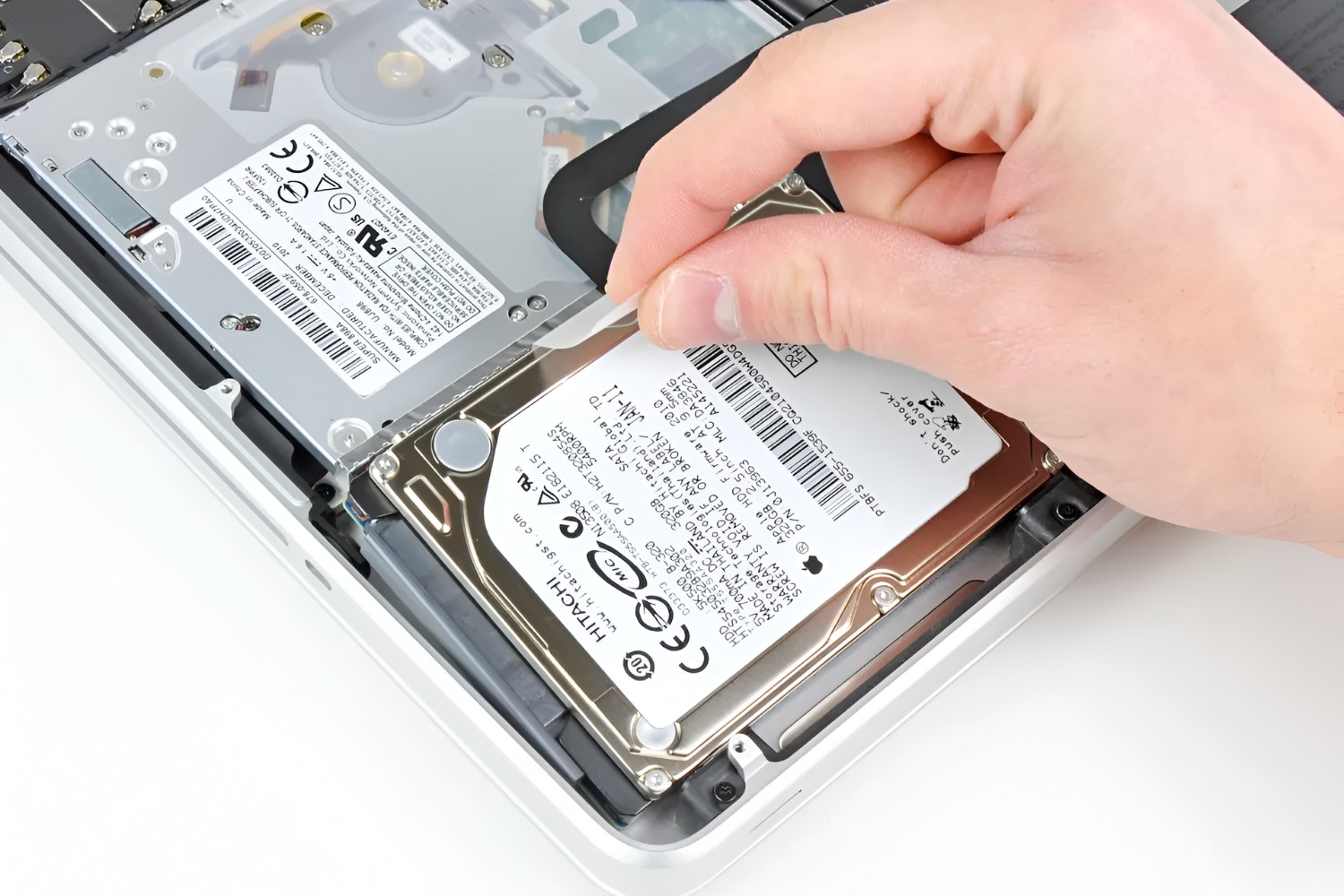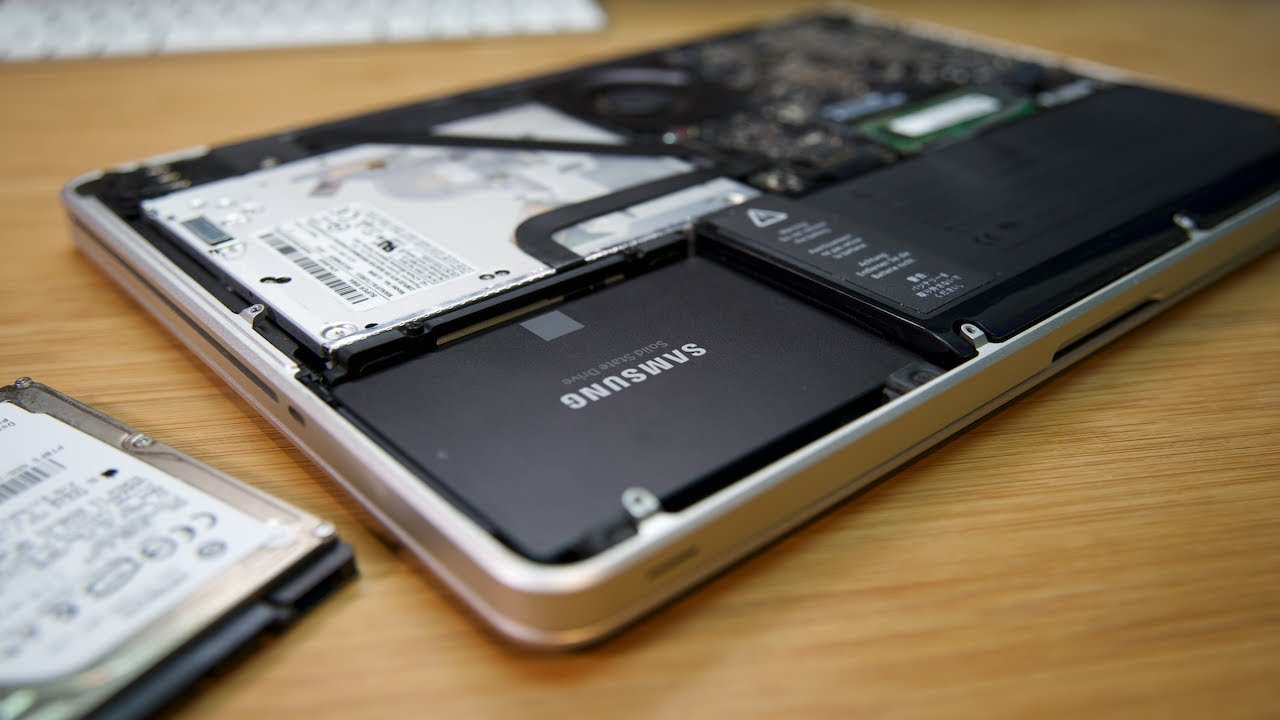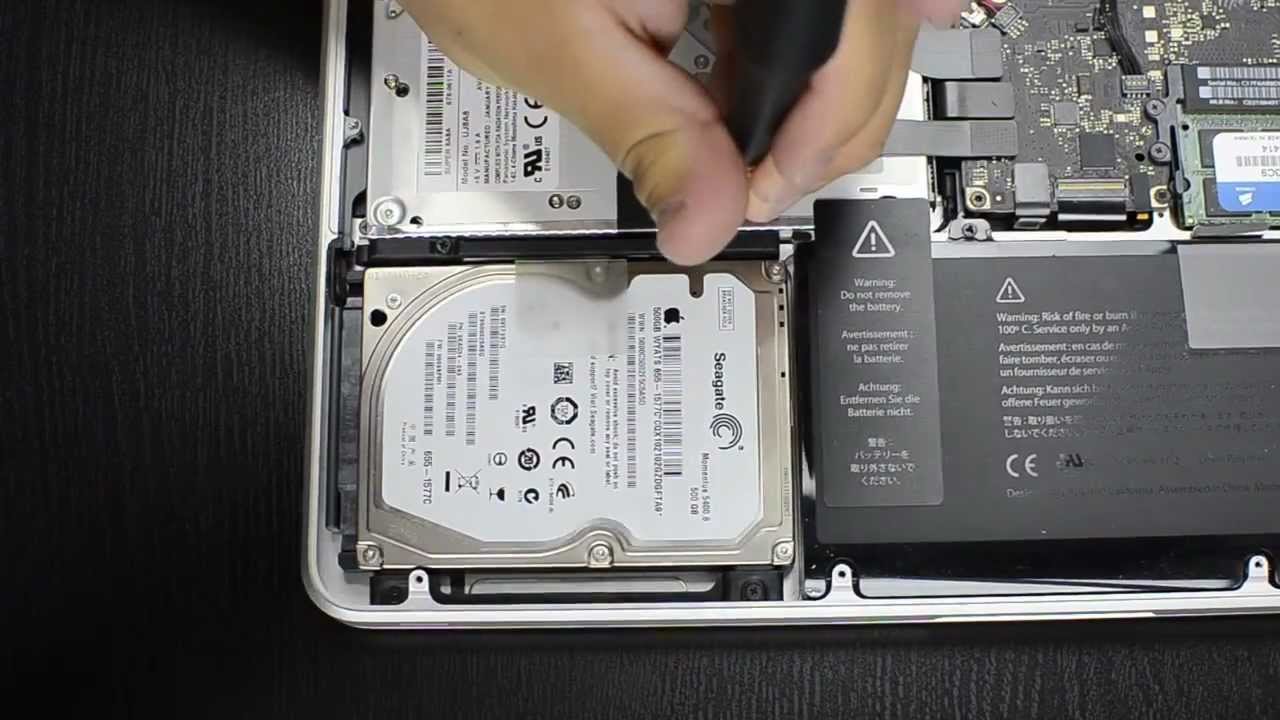Introduction
Welcome to the world of MacBook Pro! If you are a proud owner of this sleek and powerful device, you already know how it offers seamless performance and exceptional user experience. One of the key components that contribute to the MacBook Pro’s impressive performance is the solid-state drive (SSD).
In this article, we will dive into the world of SSDs specifically designed for MacBook Pro and explore the benefits of using one. Whether you’re a tech enthusiast looking to upgrade your MacBook Pro’s storage or a curious individual seeking to better understand the difference between SSDs and HDDs, this article will provide you with a comprehensive guide.
A solid-state drive, commonly referred to as an SSD, is a type of storage device that uses flash memory to store data. Unlike traditional hard disk drives (HDDs), SSDs contain no moving parts, making them faster, more durable, and more efficient.
So, why should you consider upgrading to an SSD for your MacBook Pro? Well, the performance benefits alone are worth it. SSDs offer faster boot times, quicker file transfers, and improved overall system responsiveness. This means you can launch applications in a snap, open multiple tabs without slowing down, and enjoy a seamless computing experience.
Not only are SSDs faster, but they are also more reliable. With no moving parts, they are less susceptible to damage from physical shocks and vibrations. This makes SSDs a perfect choice for those who are always on the go and require a durable storage solution.
Another significant advantage of SSDs is their energy efficiency. SSDs consume less power compared to HDDs, which translates into better battery life for your MacBook Pro. So, if you’re constantly on the move and rely on your MacBook Pro’s battery performance, upgrading to an SSD can help you stay productive for longer periods of time.
Now that we have established the importance and benefits of using an SSD for your MacBook Pro, let’s dig deeper into the differences between SSDs and HDDs to understand why SSDs are the preferred choice for many MacBook Pro users.
What is a Solid State Drive?
A solid-state drive, or SSD, is a type of storage device that is designed to replace traditional hard disk drives (HDDs). Unlike HDDs, which use rotating platters and magnetic heads to read and write data, SSDs use flash memory to store and retrieve data. This flash memory is composed of semiconductor chips, making SSDs more reliable, faster, and more energy-efficient.
One of the primary advantages of SSDs is their speed. The absence of moving parts allows SSDs to access and retrieve data at a significantly faster rate compared to HDDs. This means faster boot times, quicker application launches, and improved overall system performance. Whether you are opening large files, video editing, or running resource-intensive applications, an SSD can significantly enhance your MacBook Pro’s performance.
SSDs also bring additional benefits in terms of durability and reliability. Unlike HDDs, which are prone to mechanical failures due to their moving parts, SSDs are extremely resistant to physical shocks and vibrations. This makes them ideal for travelers or individuals who use their MacBook Pro in challenging environments.
Another advantage of SSDs is their energy efficiency. SSDs consume less power than HDDs, resulting in improved battery life for your MacBook Pro. This is particularly advantageous for portable devices where battery performance is crucial. With an SSD, you can enjoy extended usage time without worrying about draining your battery quickly.
Additionally, SSDs operate silently. Since they do not have any mechanical parts, there is no noise generated from the drive. This is in contrast to HDDs, which can produce noticeable sound when the platters spin or the heads move. The absence of noise from an SSD contributes to a quieter computing experience, allowing you to focus on your work or enjoy media without distractions.
It is worth noting that SSDs are available in different capacities, ranging from a few hundred gigabytes to several terabytes. So whether you need extra storage for your important files, extensive multimedia libraries, or large project files, you can find an SSD with the capacity that suits your needs.
Overall, a solid-state drive provides numerous benefits for MacBook Pro users. From improved speed and performance to enhanced durability and energy efficiency, upgrading to an SSD can significantly enhance your computing experience. In the following sections, we will explore the differences between SSDs and HDDs in more detail and delve into how a solid-state drive works in a MacBook Pro.
Benefits of Using a Solid State Drive
There are several compelling reasons why using a solid-state drive (SSD) in your MacBook Pro can greatly benefit your computing experience. Let’s explore some of the key advantages:
1. Speed: SSDs are much faster than traditional hard disk drives (HDDs). Their flash memory technology allows for near-instantaneous access to data, resulting in faster boot times, quicker application launches, and overall snappier performance. With an SSD, you can experience significantly reduced loading times when working with large files, saving you precious time and boosting productivity.
2. Reliability: Unlike HDDs, SSDs have no moving parts. This means they are more resistant to physical shocks and vibrations. Not only does this make SSDs more reliable in terms of data integrity, but it also makes them ideal for individuals on the go, as they can withstand being jostled around without risking damage to your valuable data.
3. Energy Efficiency: SSDs are known for their energy efficiency. Compared to HDDs, which require power to spin their platters continuously, SSDs consume less power, resulting in improved battery life for your MacBook Pro. This means you can enjoy extended usage time without constantly having to search for an outlet or worrying about draining your battery too quickly.
4. Noiseless Operation: SSDs operate silently since they don’t have any moving parts that can generate noise like HDDs. This creates a quieter computing environment, allowing you to focus on your work or enjoy multimedia content without any annoying distractions.
5. Durability: As mentioned earlier, SSDs are more resistant to physical shocks and vibrations due to their lack of moving parts. This makes them highly durable and reliable, particularly for MacBook Pro users who are frequently on the move or work in environments where accidental bumps or drops may occur.
6. Compact and Lightweight: SSDs are typically smaller and lighter than HDDs, making them a perfect choice for MacBook Pro users who prioritize portability. The compact size and lightweight design of SSDs enable you to enjoy the benefits of high-speed storage without sacrificing the sleek and lightweight nature of your MacBook Pro.
7. Improved File Transfer: With faster read and write speeds, SSDs excel at transferring files quickly and efficiently. Whether you’re copying large media files, backing up important data, or moving files between external devices, an SSD dramatically reduces the time it takes to complete these tasks.
8. Longevity: SSDs often have a longer lifespan compared to HDDs. With no rotating platters or mechanical components to wear out over time, SSDs can withstand a higher number of read and write cycles. This can translate into prolonged use without worrying about drive failure or the need for frequent replacements.
In summary, using a solid-state drive in your MacBook Pro offers notable benefits such as enhanced speed, reliability, energy efficiency, and durability. With the ever-increasing need for quick and efficient storage solutions, upgrading to an SSD is a wise choice that can greatly improve your overall computing experience.
Understanding the Difference between SSDs and HDDs
When it comes to storage options for your MacBook Pro, two main types of drives dominate the market: solid-state drives (SSDs) and hard disk drives (HDDs). While they both serve the purpose of storing and retrieving data, there are several fundamental differences between these two technologies. Let’s explore them in detail:
1. Technology: The most significant difference between SSDs and HDDs lies in their underlying technology. HDDs use mechanical components, including rotating platters and magnetic heads, to read and write data. On the other hand, SSDs utilize flash memory, which is a type of non-volatile memory that retains data even when your MacBook Pro is turned off. This fundamental difference in technology leads to various distinctions in terms of performance, reliability, and form factor.
2. Speed and Performance: SSDs have a significant advantage over HDDs when it comes to speed and performance. Unlike HDDs that require a physical read/write head to access data, SSDs can access data electronically, resulting in near-instantaneous access times. This translates into faster boot times, shorter application launch times, and improved overall system responsiveness. In contrast, HDDs are relatively slower, with limited read/write speeds due to their mechanical nature.
3. Form Factor and Capacity: HDDs typically come in larger form factors, with 3.5-inch drives commonly used in desktop computers and 2.5-inch drives used in laptops. SSDs, on the other hand, are more compact and lightweight, often in the 2.5-inch form factor for laptops. However, advancements in SSD technology have also introduced smaller form factors such as M.2 drives, which provide even more flexibility and space-saving options. In terms of capacity, HDDs generally offer higher storage capacities at a lower cost compared to SSDs, but SSDs have been continuously improving in this aspect as well.
4. Reliability and Durability: SSDs have no moving parts, making them more resistant to physical shocks, vibrations, and data loss caused by mechanical failure. This inherent reliability makes them ideal for portable devices like MacBook Pro, as they can endure bumps, drops, and other physical stresses that would typically harm HDDs. HDDs, on the other hand, are more susceptible to damage from physical shocks and may suffer from data loss or performance degradation due to mechanical failures.
5. Noise and Power Consumption: Since SSDs do not have any mechanical components, they operate silently, producing no noise during operation. HDDs, on the other hand, can generate noticeable noise from the spinning of their platters and the movement of their read/write heads. In terms of power consumption, SSDs are more energy-efficient compared to HDDs. SSDs require less power to operate, resulting in improved battery life for MacBook Pro users.
6. Cost: Historically, SSDs have been more expensive than HDDs in terms of cost per gigabyte. However, the prices of SSDs have been steadily decreasing over the years, making them more affordable for consumers. While HDDs generally offer higher storage capacities at a lower cost, the decreasing cost of SSDs has made them a viable option for users who prioritize performance, speed, and durability.
In summary, SSDs and HDDs differ in terms of technology, speed, reliability, form factor, noise, power consumption, and cost. Understanding these differences can help you make an informed decision when choosing the right storage solution for your MacBook Pro. SSDs offer faster performance, increased reliability, and improved durability, making them an excellent choice for users who prioritize speed and efficiency.
How Does a Solid State Drive in a MacBook Pro Work?
A solid-state drive (SSD) is a key component in a MacBook Pro that stores and retrieves data. Understanding how an SSD works can help you appreciate its benefits and make the most of your MacBook Pro’s performance. Let’s take a closer look at how an SSD operates:
1. Flash Memory Cells: At the heart of an SSD are multiple flash memory cells. These cells use a technology called NAND, which stands for “Not-And.” NAND flash memory cells are composed of floating gate transistors that store and retain electrical charges to represent data as 0s and 1s.
2. Controller: An SSD has a built-in controller, which acts as the brain of the drive. The controller manages the flow of data to and from the NAND flash memory cells. It performs tasks such as error correction, wear leveling, and garbage collection. The controller plays a crucial role in optimizing the performance, reliability, and lifespan of the SSD.
3. Read and Write Operations: When you store data on an SSD, the controller sends electrical pulses to the appropriate flash memory cells, either charging or discharging them based on the desired binary value. This process is known as a write operation. When you retrieve data from the SSD, the controller reads the stored electrical charges, converting them back into usable data, known as a read operation. These read and write operations occur at an incredibly fast rate, contributing to the SSD’s impressive speed and responsiveness.
4. Wear Leveling: Unlike traditional hard disk drives (HDDs), which can write and rewrite data to any sector on the disk, SSDs have a limited number of times each flash memory cell can be written to before it wears out. To improve the lifespan of an SSD, wear leveling algorithms distribute write operations evenly across all flash memory cells. This ensures that no single cell is being excessively used, prolonging the overall longevity of the drive.
5. Error Correction: Flash memory cells can experience errors, such as bit flips, where the stored data becomes corrupted or altered. To address this, SSD controllers employ error correction techniques, such as error-correcting code (ECC) algorithms, to detect and fix these errors. This ensures the accuracy and integrity of your data when reading from or writing to the SSD.
6. TRIM Command: The TRIM command is a feature used by SSDs to enhance their performance over time. When you delete files from your MacBook Pro, the SSD marks those blocks as available for new data to be written. However, without the TRIM command, the SSD’s performance can degrade over time, as it has to perform additional write operations to clear these blocks before writing new data. The TRIM command informs the SSD which blocks are no longer in use, allowing the drive to more efficiently manage its available storage space and maintain optimal performance.
7. Data Encryption: Many SSDs include built-in hardware encryption capabilities, enabling you to protect your data with encryption algorithms. This ensures that your data remains secure even if the drive is removed or stolen. This feature can be especially valuable for MacBook Pro users who frequently travel or handle sensitive information.
Overall, a solid-state drive works through the use of flash memory cells, a controller, and advanced algorithms. The combination of these components and technologies allows SSDs to deliver superior performance, reliability, and speed compared to traditional hard disk drives. Understanding how an SSD works can help you make the most of your MacBook Pro’s storage and optimize your computing experience.
Is Upgrading to a Solid State Drive Worth It?
Upgrading to a solid-state drive (SSD) can be a game-changer for MacBook Pro users, significantly enhancing their overall computing experience. But is it really worth the investment? Let’s explore the advantages and considerations of upgrading to an SSD:
1. Performance Boost: One of the most significant benefits of upgrading to an SSD is the noticeable improvement in performance. SSDs offer faster boot times, quicker application launches, and overall snappier system responsiveness. Simple tasks like opening files or browsing the web become smoother and more enjoyable. If you’re tired of waiting for applications to load or your MacBook Pro to start up, upgrading to an SSD can provide a substantial performance boost that will positively impact your productivity.
2. Increased Storage Speed: With an SSD, file transfers become lightning-fast. Moving large files, copying data, or performing backups are completed in a fraction of the time compared to traditional hard disk drives (HDDs). This makes tasks such as working with multimedia files, editing videos, or managing large projects much more efficient. By upgrading to an SSD, you’ll have the advantage of high-speed storage, allowing you to get work done more quickly and efficiently.
3. Energy Efficiency and Battery Life: SSDs consume less power compared to HDDs, resulting in improved battery life for your MacBook Pro. This is especially beneficial for users who rely on their MacBook Pro while on the go or in situations where access to power outlets may be limited. With an SSD, you can enjoy longer usage time and enhanced productivity without constantly worrying about finding a power source.
4. Increased Durability: Unlike HDDs, which have moving parts that are susceptible to physical damage, SSDs have no mechanical components. This makes them more durable and resistant to shocks, vibrations, and accidental drops. If you frequently travel with your MacBook Pro or use it in environments where it may be exposed to physical stress, upgrading to an SSD can give you peace of mind knowing that your data is better protected.
5. Noiseless Operation: SSDs operate silently since they lack the spinning platters and moving heads found in HDDs. This eliminates any noise generated by the drive during operation, creating a quieter computing environment. Whether you’re working in a quiet library or want to enjoy multimedia content without distractions, an SSD provides a noiseless experience.
6. Initial Cost: One factor to consider when upgrading to an SSD is the initial cost. SSDs are generally more expensive than HDDs when comparing equivalent storage capacities. However, the prices of SSDs have been steadily decreasing over time, making them more affordable and accessible for users. When weighing the cost against the performance and other benefits, many users find the investment in an SSD to be well worth it.
7. Future-Proofing and Longevity: SSD technology continues to evolve rapidly, with each new generation offering increased capacity and improved performance. By upgrading to an SSD, you are future-proofing your MacBook Pro, ensuring that it can handle demanding applications and larger data sizes without experiencing significant slowdowns. Additionally, SSDs typically have a longer lifespan compared to HDDs due to their lack of moving parts, reducing the need for frequent replacements.
Considering the improved performance, increased storage speed, energy efficiency, and durability that SSDs offer, upgrading to an SSD is often deemed worth the investment for MacBook Pro users. While there is an initial cost to consider, the long-term benefits and enhanced productivity make it a compelling choice for those seeking to elevate their computing experience.
How to Upgrade to a Solid State Drive on a MacBook Pro
Upgrading to a solid-state drive (SSD) on your MacBook Pro can breathe new life into your device, boosting its performance and enhancing your overall computing experience. Here are the steps to follow when upgrading to an SSD:
1. Backup Your Data: Before proceeding with any hardware changes, it is essential to back up all your important data. Use Time Machine or any other reliable backup solution to create a full backup of your MacBook Pro’s contents. This ensures that you won’t lose any files during the upgrade process.
2. Choose the Right SSD: Research and choose an SSD that is compatible with your MacBook Pro model. Consider factors such as storage capacity, performance, and budget. Consult the manufacturer’s website or a reliable Apple reseller to ensure compatibility and get the best SSD for your needs.
3. Gather the Necessary Tools: Prepare the necessary tools for the upgrade. In most cases, you will need a small screwdriver, typically a Phillips #00 or a Torx screwdriver. Check your MacBook Pro’s specific model to determine the appropriate tools required for removing the back cover and disconnecting the current drive.
4. Prepare the MacBook Pro: Before opening your MacBook Pro, shut it down completely and unplug any connected cables. Ground yourself by touching a grounded metal object to prevent electrostatic discharge that could damage your MacBook Pro during the upgrade process.
5. Remove the Existing Drive: Remove the screws that secure the back cover and gently lift it off. Locate the existing drive, which is typically a 2.5-inch HDD, and disconnect the data and power cables connected to it. Carefully remove the drive from its slot, ensuring you don’t damage any other components.
6. Install the SSD: Align the new SSD with the slot and firmly connect the data and power cables to it. Make sure the connections are secure but avoid applying excessive force. Carefully place the SSD in its designated spot, taking care not to touch the gold connectors or any sensitive components.
7. Replace the Back Cover: Place the back cover back onto your MacBook Pro and secure it with the screws you removed earlier. Tighten them carefully, making sure they are secure but not overtightened.
8. Power On and Initialize the SSD: Power on your MacBook Pro. If the SSD is new and doesn’t have any data on it, you will need to initialize it. Go to “About This Mac” and click on “System Report.” Under “Hardware,” select “Storage” and look for the new SSD. Click on the SSD, and then click on “Erase” to format and initialize the drive.
9. Restore Your Data: Once the SSD is initialized, you have two options for restoring your data. You can either restore your data from the backup you created earlier using Time Machine or manually transfer your files to the new SSD. Choose the method that suits your preferences and follow the on-screen prompts to complete the process.
10. Enjoy Your Upgraded MacBook Pro: Once your data is restored, you can start enjoying the benefits of your upgraded MacBook Pro. Experience faster boot times, improved application launches, and overall enhanced performance.
It’s worth noting that these steps are general guidelines, and the actual process may vary slightly depending on your specific MacBook Pro model. If you’re not confident in performing the upgrade yourself, it’s always a good idea to seek professional assistance to ensure a seamless and successful upgrade.
Conclusion
Upgrading to a solid-state drive (SSD) on your MacBook Pro can be a transformational experience. The benefits of improved speed, enhanced performance, increased durability, energy efficiency, and quiet operation make it a worthwhile investment for MacBook Pro users seeking to optimize their computing experience.
An SSD offers significant advantages over traditional hard disk drives (HDDs) by utilizing flash memory and eliminating moving parts. The result is faster boot times, quicker application launches, and improved overall system responsiveness. SSDs also provide increased durability, making them ideal for users who frequently travel or work in environments with physical stressors.
Energy efficiency is another compelling advantage of SSDs. The reduced power consumption of SSDs translates to improved battery life, allowing MacBook Pro users to work longer hours without constantly worrying about finding a power source.
Although the initial cost of upgrading to an SSD may be a consideration, the long-term benefits and increased productivity often outweigh the investment. SSDs offer future-proofing capabilities, as they continuously evolve to offer higher capacities and improved performance. Additionally, the longer lifespan and reliability of SSDs make them a sound choice for MacBook Pro users looking for a long-term storage solution.
When upgrading to an SSD on your MacBook Pro, it’s essential to follow the necessary steps, such as backing up your data, selecting the compatible drive, preparing the required tools, and carefully installing the SSD. If you’re not comfortable performing the upgrade yourself, seeking professional assistance ensures a seamless and successful transition.
In conclusion, upgrading to an SSD on your MacBook Pro is a smart decision that can significantly enhance your computing experience. The improved speed, performance, durability, energy efficiency, and quiet operation make it a worthwhile investment, allowing you to enjoy a faster, more reliable, and more efficient MacBook Pro.







